Most visitors to the West Country whizz down the A303, overlooking the Blackmore Vale just beneath it and, as a result, the area remains remarkably unspoilt. It lies in North Dorset and stretches just over the border into southwest Wiltshire, a wide, sheltered valley of fertile agricultural land dotted with charming, quintessentially English villages, many of which are built from warm, golden stone.
The Dorset Downs and Cranborne Chase border it, with the towns of Shaftesbury (in the north) and Blandford Forum (in the south) being natural boundary markers. Hills such as Hambledon and Bulbarrow encircle the vale, and provide fine vantage points over its neat fields lined by hedges, its woodland and its villages.
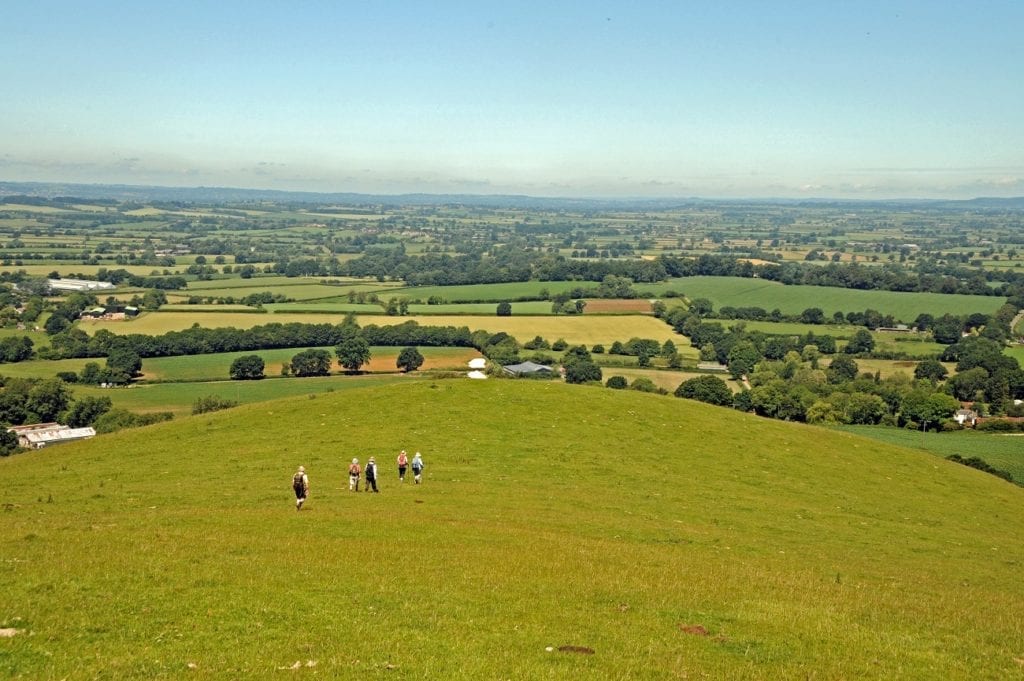
In spring and summer the landscape is sprinkled with yellow highlights – crops of oilseed rape. Those views would once have been quite different as the vale was densely wooded and the area around Gillingham a royal hunting forest. Few pockets of woodland remain, the most notable being on Duncliffe Hill, which rises like a beacon from the flat base of the vale.
From its source at Stourhead, just over the Wiltshire border, the River Stour meanders through the vale on its way to the sea at Christchurch. A series of mills used to punctuate the water’s journey through the vale, and several of them are named in the Domesday Book. Of some 50 mills that used to operate on the River Stour, many are now derelict but some have been lovingly restored.
The vale’s towns, in particular Shaftesbury and Sturminster Newton, draw visitors for their history and beauty, but perhaps the best way to appreciate the Blackmore Vale is to get out and walk its pristine countryside and hike the surrounding hills for a bird’s-eye view. For generations the scenery has inspired artists, such as John Constable; writers, such as Thomas Hardy; and poets, such as William Barnes.
What to see and do
Shaftesbury
Thomas Hardy had plenty to say about Shaftesbury: he described it as ‘one of the queerest and quaintest spots in England’, ‘breezy and whimsical’ and said that ‘beer was more plentiful than water’. It is certainly quaint and, thanks to its hilltop position, has a tendency to be breezy. Mercifully, the water supply is now far more reliable than it once was and although there is a healthy population of pubs serving local ales, I doubt beer is more plentiful than water.
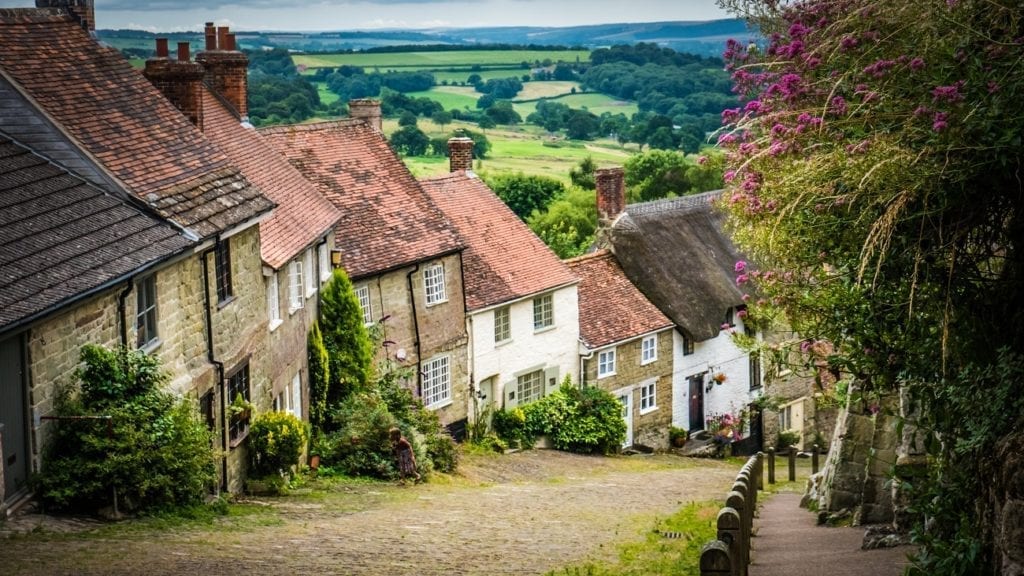
The appealing town centre is an easy walk from the car parks at the top and bottom of the High Street, and buses stop outside the Town Hall, in the very centre of town. The Town Hall is a Georgian building whose battlements seem designed to project a serious, castle-like image; the weekly street market takes place here on Thursdays. Next to the Town Hall is the diminutive St Peter’s Church; built in the late 15th century, it is the oldest church in Shaftesbury.
Just behind the Town Hall is the much-photographed, much-painted Gold Hill. This impossibly steep, cobbled street with its row of attractive cottages and pastoral Blackmore Vale backdrop is a local celebrity. The highlight of its career was appearing in the 1973 Hovis bread commercial directed by Ridley Scott, which featured a boy pushing a bicycle up the hill. A mildly comical statue of a Hovis loaf sits next to the Town Hall, a reminder of that pinnacle of Gold Hill’s fame.
Blandford Forum
Blandford is hailed as one of the finest Georgian rural market towns in England, and occupies an enviable position in a wooded valley on the banks of the River Stour. Much of the original town was destroyed by a devastating fire in 1731; memorably named local architects and builders John and William Bastard were tasked with rebuilding the town and the elegant, coherent Georgian centre is the result. Its uniformity gives it a very different feel to other Dorset towns.
The church of St Peter and St Paul dominates the town centre, a simple, classical building built on the site of its medieval predecessor. Its most recognisable feature, the wooden cupola on its tower, was not part of the original design. The Bastard brothers intended a steeple to be built but apparently the money ran out and they had to make do with the cupola, which was added in 1758.
The Georgian marketplace comes into its own on Thursdays and Saturdays, when it hosts a bustling food and bric-a-brac market.
Sturminster Newton
Sturminster Newton, known to locals as Stur, has been the nucleus of life in the Blackmore Vale for centuries. The town’s livestock market, dairy farming, button- and candle-making brought great prosperity to the area, particularly from 1863 when the Somerset and Dorset Railway opened and the area’s milk, cheese and other produce could be sold further afield. The railway closed in 1966 but parts of it now form the North Dorset Trailway, a cycle- and footpath that links Sturminster Newton to surrounding villages.
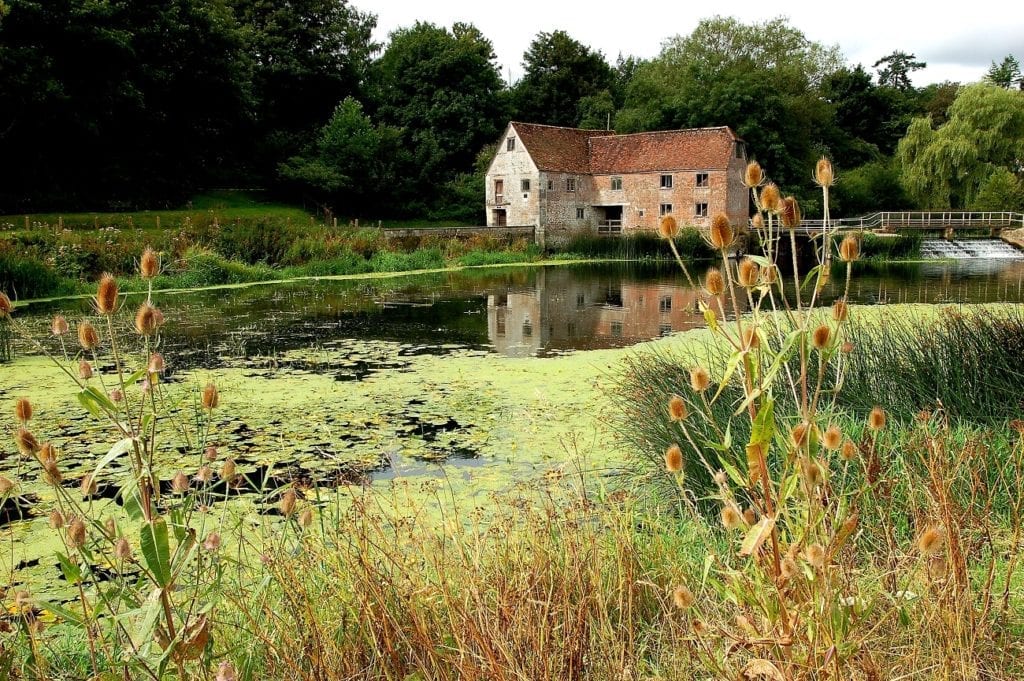
The town centre, and the marketplace in particular, is overflowing with a variety of historic buildings and architectural styles, including 17th- and 18th-century thatched cottages, Georgian stone houses and 19th-century brick buildings. Church Street and Tanyard Lane have some particularly pretty houses.
Prominent in the marketplace are the well-worn stone remains of a 15th-century market cross, which was reportedly shaped like a mushroom until 1540 when it was smashed by thieves. A Monday market is held here and features local foods, crafts and clothing.
Duncliffe Wood
A visit to Duncliffe is perhaps the best way to gain an impression of what Blackmore and Gillingham would have been like when they were royal hunting forests. As the many farms grew up in the area, the land was cleared but on Duncliffe Hill a pocket of well-preserved woodland remains, cared for by the Woodland Trust. The Domesday Book records a wood here, which was traditionally coppiced, and is said to have been the inspiration for Thomas Hardy’s The Woodlanders.
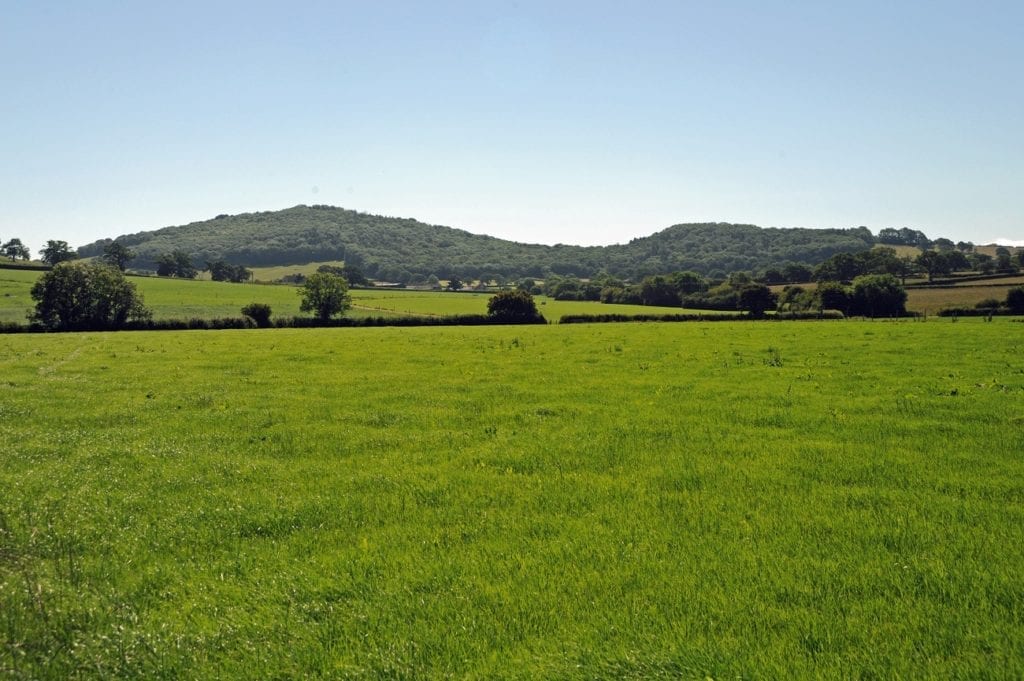
Much of the ancient oak, ash and hazel was felled in the 1950s and replanted with Norway spruce, oak, larch and beech. Today, the Woodland Trust manages it in such a way as to encourage a greater mix of native broadleaf species. Footpaths and a bridleway lead through the 228-acre wood to the top of the hill (690 feet), which provides far-reaching views of the surrounding farmland.
Whenever I walk through the wood, I always half expect to encounter the wildlife characters from a children’s book – it has that magical feel – and if you walk there on a summer’s evening you are likely to catch a glimpse of many of them – the local roe deer, badgers, pheasants and foxes. Butterflies are also abundant, including silver-washed fritillary, white admiral and purple hairstreak.
Hambledon Hill
The view from Hambledon Hill is one to soothe the soul and replenish the energy stores, which is just as well as the walk to the summit is one to tire the legs. The hill juts out into the Blackmore Vale, providing a natural viewing platform over the tapestry of small fields and villages.
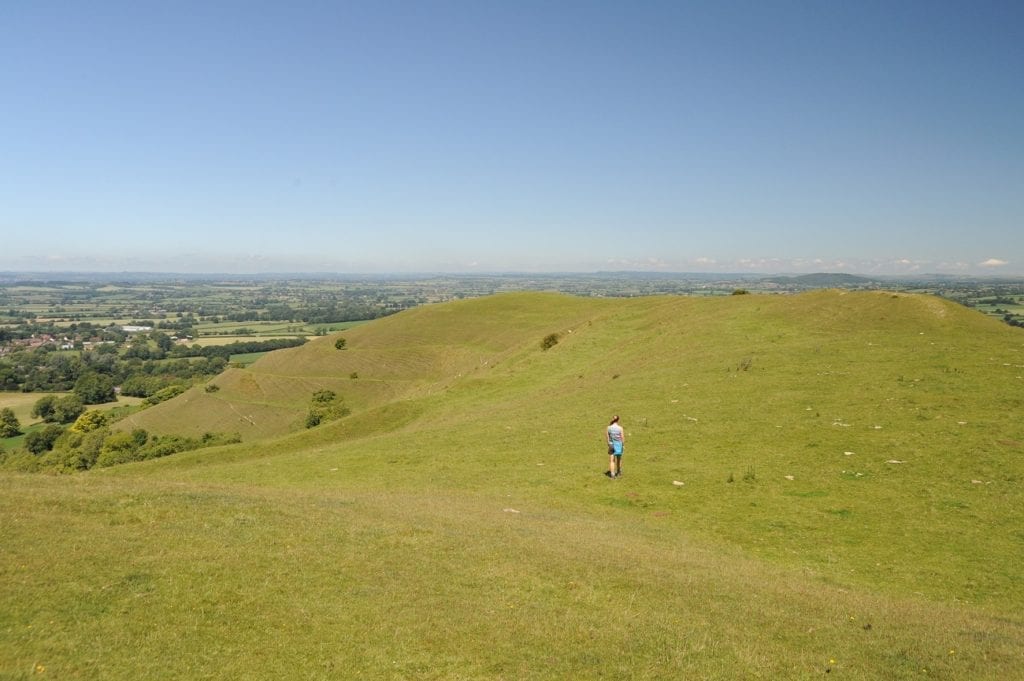
Archaeologists flock to Hambledon Hill and although its earliest occupation was Neolithic, it is best known as an Iron Age hillfort. The site seems to have been abandoned around 300bc, possibly in favour of nearby Hod Hill.
When I was walking on Hambledon Hill in 2011, photographing the view towards Shaftesbury, a group of archaeologists on a guided tour came up behind me and I heard several shrieks of excitement. It was the end of a particularly hot and dry spell and the weather had exposed the outline of a Neolithic enclosure, which even the tour leader had never seen before.
Fiddleford Manor
This atmospheric medieval manor a mile east of Sturminster Newton on the A357 is one of the oldest buildings in Dorset. In 1355, the land passed through marriage to William Latimer, later sheriff of Somerset and Dorset.
The main parts of the house, which was grand for its time, are thought to have been built for Latimer around 1370. The arched timber braces of the Great Hall and Solar are spectacular and, combined with the low ceilings, wood panelling and hefty fireplaces, give an impression of what a medieval Dorset house may have been like.
Upstairs, in what was the family’s quarters, is a 14th-century wall painting of the Angel Gabriel announcing that Mary would give birth to the son of God. It was discovered in 1990 under layers of whitewash and is remarkably well preserved. It is a privilege to admire the 14th-century craftsmanship and the 16th- and 17th-century additions.
As you look out of the upstairs window at the river and the fields beyond, it is humbling and exciting to think of the characters that have stood there over the centuries, enjoying a view that has barely changed.
More information
Discover more about the Blackmore Vale in our Dorset guide: